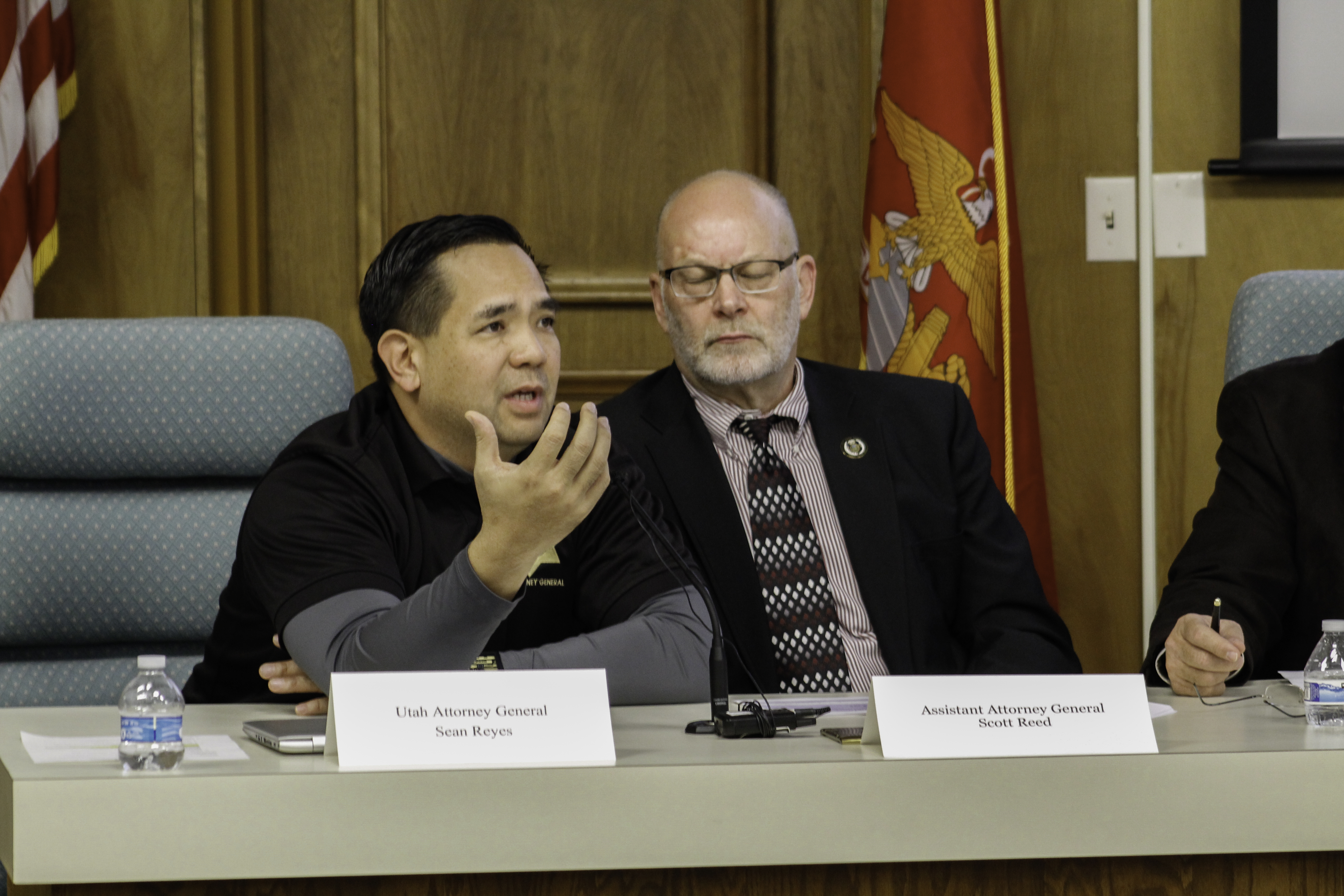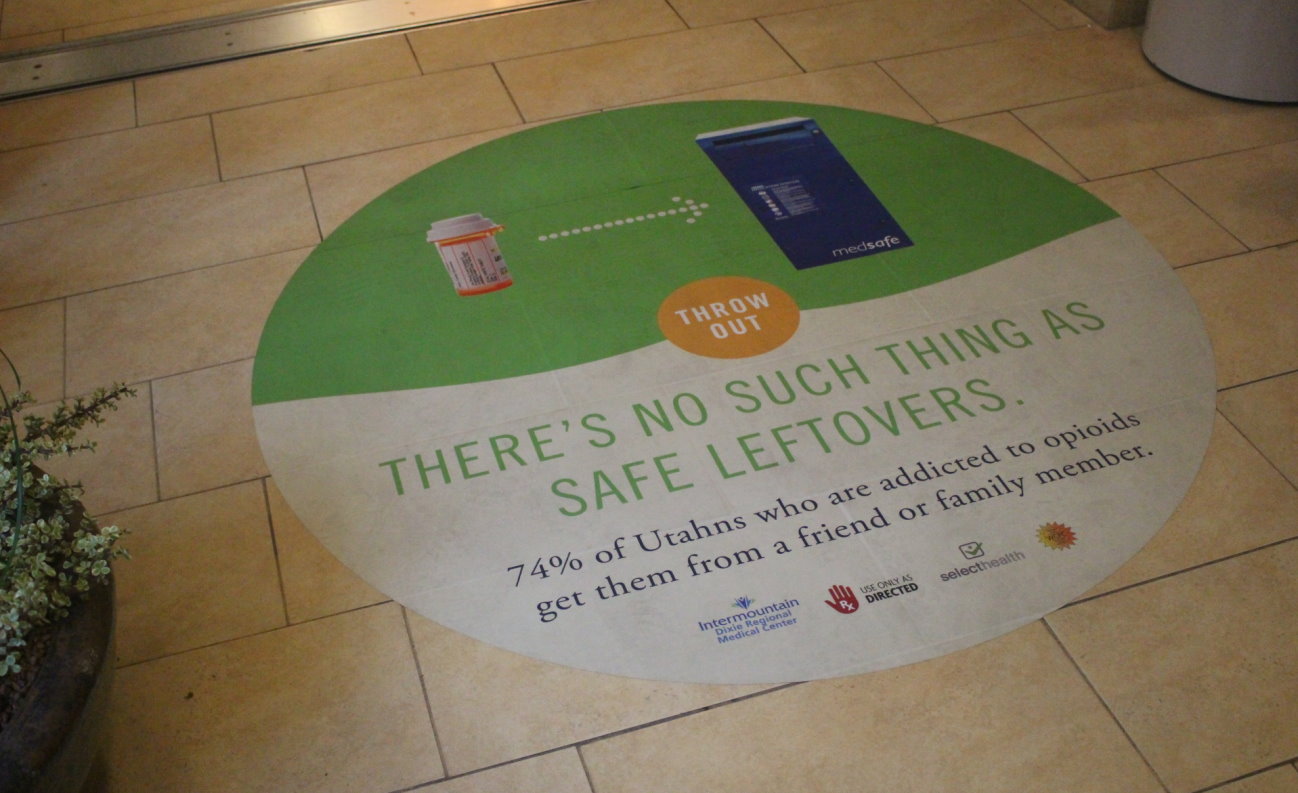
ST. GEORGE — Deaths connected to opioid overdoses in Utah are going down, according to the Utah Attorney General’s Office.
Being credited with the decrease in opiate-related fatalities is Utah Naloxone, a group that promotes the use of a naloxone, also known as Narcan, in temporarily reversing the effects of opioid overdoses.
Opioids include pain pills, heroin and fentanyl.
According to a press release issued Tuesday by the Utah Attorney General’s Office, “more than 3,000 people in Utah have a second chance at life thanks to the efforts of Utah Naloxone.”
“All of these life-saving doses were administered by non-medical members of our community who obtained rescue kits from Utah Naloxone or one of its Overdose Outreach Provider partners just for this purpose,” the press release states.
Naloxone comes in either a syringe or a nasal spray.
Utah was one of seven states seeing a decline in opioid overdose deaths in 2017.

“The number of people who are surviving an opioid overdose and making it to an emergency room for care is rising – almost doubling from 2015 to 2017,” the release states.
Overdose survivor visits to emergency rooms rose to 2.8 out of 10,000 in 2017 from 1.5 out out 10,000 in 2015.
The Utah Attorney General Office has called the work of Utah Naloxone and its community partners “a game-changer” in the state’s fight against opioid overdose deaths.
However, naloxone only temporarily reverses the effects of an opioid overdoes for up to 30-90 minutes. During that time it is critical that an overdose victim get additional medical aid immediately.
While overdose death’s are going down, it has also been reported that 24 Utahns die each month from an opioid overdose.

Read more: Opioid, heroin deaths on the decline in Utah, state officials say
“Overdose is still the leading cause of injury death in the state, and Utah still is among states with a high rate of overdose deaths,” the Utah Attorney General’s Office stated.
Utah Naloxone was co-founded by Dr. Jennifer Plumb. She and her brother, Sam Plumb, manage the organization created in memory of a family member who died from a heroin overdose during the mid-1990s.
“No other families should lose a loved one to a preventable death,” Plumb said in a 2016 interview with St. George News.
In Southern Utah and across the state, efforts have been made to reduce fatalities caused by opioid overdoses in recent years.
In 2017, Intermountain Healthcare launched a campaign to reduce by 40 percent the number of opioid tablet prescriptions written by its doctors.
In various Intermountain Healthcare facilities like Cedar City Hospital and Dixie Regional Medical Center, posters and signs giving statistics and warnings involving opioid addition and overdose are displayed on walls, floors, tables, elevator doors and more.

Read more: Dixie Regional plasters messages across hospital campus in campaign against opioid abuse
An effort to mark opioid-based medications with red labels warning of addition and overdose was also launched in 2017.
Area public safety and EMS agencies also began to carry naloxone. Washington City Police officers started carrying Narcan in nasal spray form in 2016.
Read more: Washington City Police officers now carry overdose-reversing drug
President Donald Trump declared the opioid epidemic a public health emergency in October 2017.
If you or someone you know is taking opioids you should have naloxone on hand in case of an overdose.
Naloxone kits are available through Utah Naloxone. It is legal to possess the drug and administer it if you suspect someone is overdosing on opioids.
For additional information, as well as a map showing the locations of area pharmacies where you can get a naloxone rescue kit, visit the Utah Naloxone website.
Email: [email protected]
Twitter: @MoriKessler
Copyright St. George News, SaintGeorgeUtah.com LLC, 2019, all rights reserved.